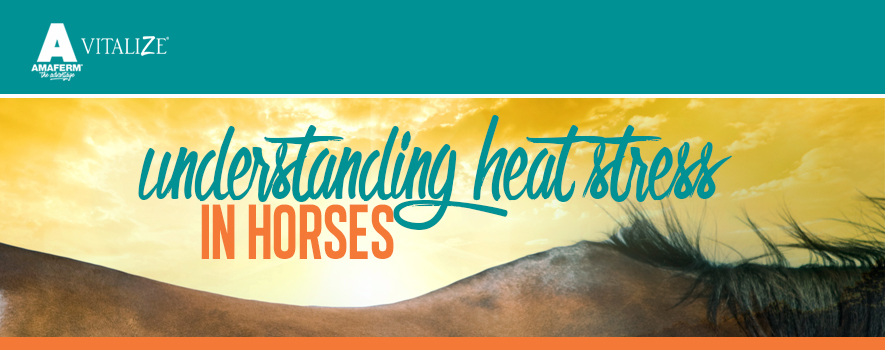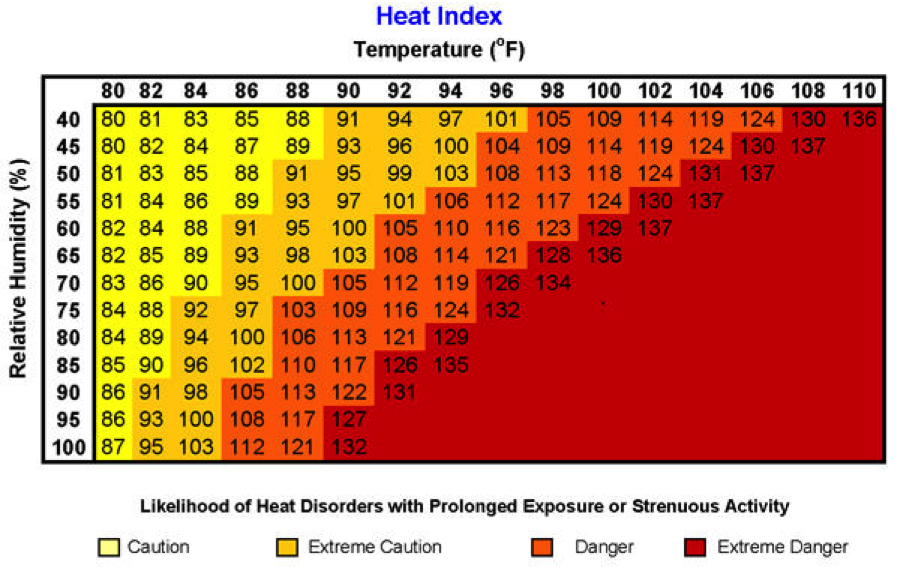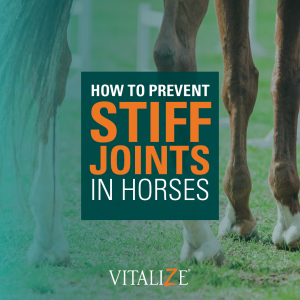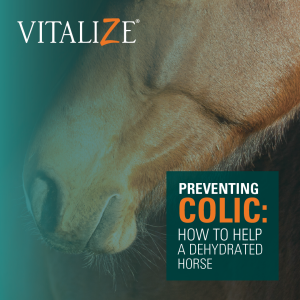
Summer heat is quickly approaching. The increasing temperatures and humidity not only make working outside uncomfortable for us, but they also have a major impact on our horses’ health and performance. Negative responses to heat stress include going off feed, decreased fertility, colic due to decreased water content in the gut and overall poor performance. As the figure below reflects, the degree of heat stress is commonly estimated by the heat index. The heat index is a combination of the outdoor temperature and the relative humidity.
The heat index at which a horse starts to experience heat stress is similar to when we as humans might experience heat stress. The table below (provided by the NOAA’s National Weather Service) shows mild heat stress beginning at a heat index of 80. When the heat index is between 80 and 90, mild caution should be used for exercising horses. Between 91 and 102, extreme caution should be used. Between 103 and 124, heat stress may become dangerous and above 124 you should avoid exercising a horse due to extreme danger.

In addition to the extent of heat stress, as determined by the heat index, the duration of the heat stress can heighten the negative effects on the horse. It is also hypothesized that the minimum threshold where animals begin experiencing heat stress is a function of the demands on the animal. For example, a competing barrel horse will experience heat stress at a lower heat index than a pasture horse. This is because only about a quarter of the energy used in the muscle goes toward contraction and movement. The other three-fourths of that energy is waste heat that the horse must dissipate. So, the more active a horse is, the more heat the horse must dissipate, which becomes more difficult as the heat and humidity increase. Heat is dissipated primarily through evaporation, the conversion of water to gas. This chemical reaction consumes heat and cools the horse’s skin.
There are several management practices that can be used to help manage heat stress. These include offering plenty of water, giving a cool bath, increasing air flow and providing shade. Providing adequate electrolytes during times of heat stress and extreme sweating is also important. This replenishes the salt and minerals lost during exercise. Heat stress can also be targeted from the inside out by feeding any Vitalize® product with the Amaferm® advantage. Amaferm has multiple benefits during times of heat stress including improved digestibility and increased energy availability. In fact, published research has found that Amaferm increased water intake by 9.5% and significantly reduced rectal temperature when ambient temperature was greater than 98.6°F. Several Vitalize products, such as the Vitalize® Equine Recovery Gel, also contain trace organic minerals and vitamins to help your horse recover faster and stronger from heat stress.

